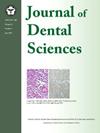创新3d打印牙科学教学模型,模拟根管治疗
IF 3.1
3区 医学
Q1 DENTISTRY, ORAL SURGERY & MEDICINE
引用次数: 0
摘要
背景/目的有效的牙髓教育需要真实的模型来模拟临床过程,特别是使用电子顶点定位器(EALs)确定工作长度(WL)。传统的拔牙或塑牙训练方法缺乏标准化、现实性和与EALs的兼容性。本研究旨在开发和评估具有导电特性的3d打印牙齿模型,该模型可以在基于eal的WL测定中进行现实和标准化的培训。材料与方法采用锥形束计算机断层扫描(CBCT)和三维扫描技术设计定制的工作长度分别为20.0 mm和21.9 mm的3D打印牙齿。每颗牙齿嵌入两种导电介质:自来水和生理盐水。36名参与者(学生、学员和教师)使用Root ZX mini EAL进行WL测量。准确度定义为测量值在真实WL±0.5 mm范围内。结果该模型在不同的用户群体和媒体中具有较高的再现性。指导员达到了完美的准确率(100%),受训者从87.5%到100%不等,学生表现出可接受但更多变的准确率(86.7%)。两种介质的测量结果无显著差异(P > 0.05)。三组间准确率差异有统计学意义(P < 0.05),说明该模型在评估经验水平方面具有一定的判别能力。结论该3d打印模型模拟了真实的根管解剖结构和传导条件,可用于有效的EAL训练。它区分了不同的熟练程度,并为临床前教育提供了一个可复制的标准化平台。该模型在理论学习和临床实践之间架起了桥梁,使其成为当代牙髓训练的宝贵工具。本文章由计算机程序翻译,如有差异,请以英文原文为准。
Innovative 3D-printed dental teaching model for root canal treatment simulation
Background/purpose
Effective endodontic education requires realistic models for simulating clinical procedures, particularly working length (WL) determination using electronic apex locators (EALs). Traditional training methods using extracted or plastic teeth lack standardization, realism, and compatibility with EALs. This study aimed to develop and evaluate a 3D-printed tooth model with conductive properties that allows realistic and standardized training in EAL-based WL determination.
Materials and methods
Custom 3D-printed teeth with two distinct working lengths (20.0 mm and 21.9 mm) were designed using cone-beam computed tomography (CBCT) and 3D scanning. Each tooth was embedded in two types of conductive media—tap water and saline. Thirty-six participants (students, trainees, and instructors) performed WL measurements using the Root ZX mini EAL. Accuracy was defined as measurements within ±0.5 mm of the true WL.
Results
The model demonstrated high reproducibility across user groups and media. Instructors achieved perfect accuracy (100 %), trainees ranged from 87.5 % to 100 %, and students demonstrated acceptable but more variable accuracy (86.7 %). No significant differences in measurement outcomes were observed between the two media (P > 0.05). Significant differences in accuracy were found among the three groups (P < 0.05), indicating the model's discriminative ability in assessing experience levels.
Conclusion
This novel 3D-printed model simulates realistic root canal anatomy and conductive conditions for effective EAL training. It distinguishes varying proficiency levels and provides a reproducible, standardized platform for preclinical education. The model bridges the gap between theoretical learning and clinical practice, making it a valuable tool for contemporary endodontic training.
求助全文
通过发布文献求助,成功后即可免费获取论文全文。
去求助
来源期刊

Journal of Dental Sciences
医学-牙科与口腔外科
CiteScore
5.10
自引率
14.30%
发文量
348
审稿时长
6 days
期刊介绍:
he Journal of Dental Sciences (JDS), published quarterly, is the official and open access publication of the Association for Dental Sciences of the Republic of China (ADS-ROC). The precedent journal of the JDS is the Chinese Dental Journal (CDJ) which had already been covered by MEDLINE in 1988. As the CDJ continued to prove its importance in the region, the ADS-ROC decided to move to the international community by publishing an English journal. Hence, the birth of the JDS in 2006. The JDS is indexed in the SCI Expanded since 2008. It is also indexed in Scopus, and EMCare, ScienceDirect, SIIC Data Bases.
The topics covered by the JDS include all fields of basic and clinical dentistry. Some manuscripts focusing on the study of certain endemic diseases such as dental caries and periodontal diseases in particular regions of any country as well as oral pre-cancers, oral cancers, and oral submucous fibrosis related to betel nut chewing habit are also considered for publication. Besides, the JDS also publishes articles about the efficacy of a new treatment modality on oral verrucous hyperplasia or early oral squamous cell carcinoma.
 求助内容:
求助内容: 应助结果提醒方式:
应助结果提醒方式:


